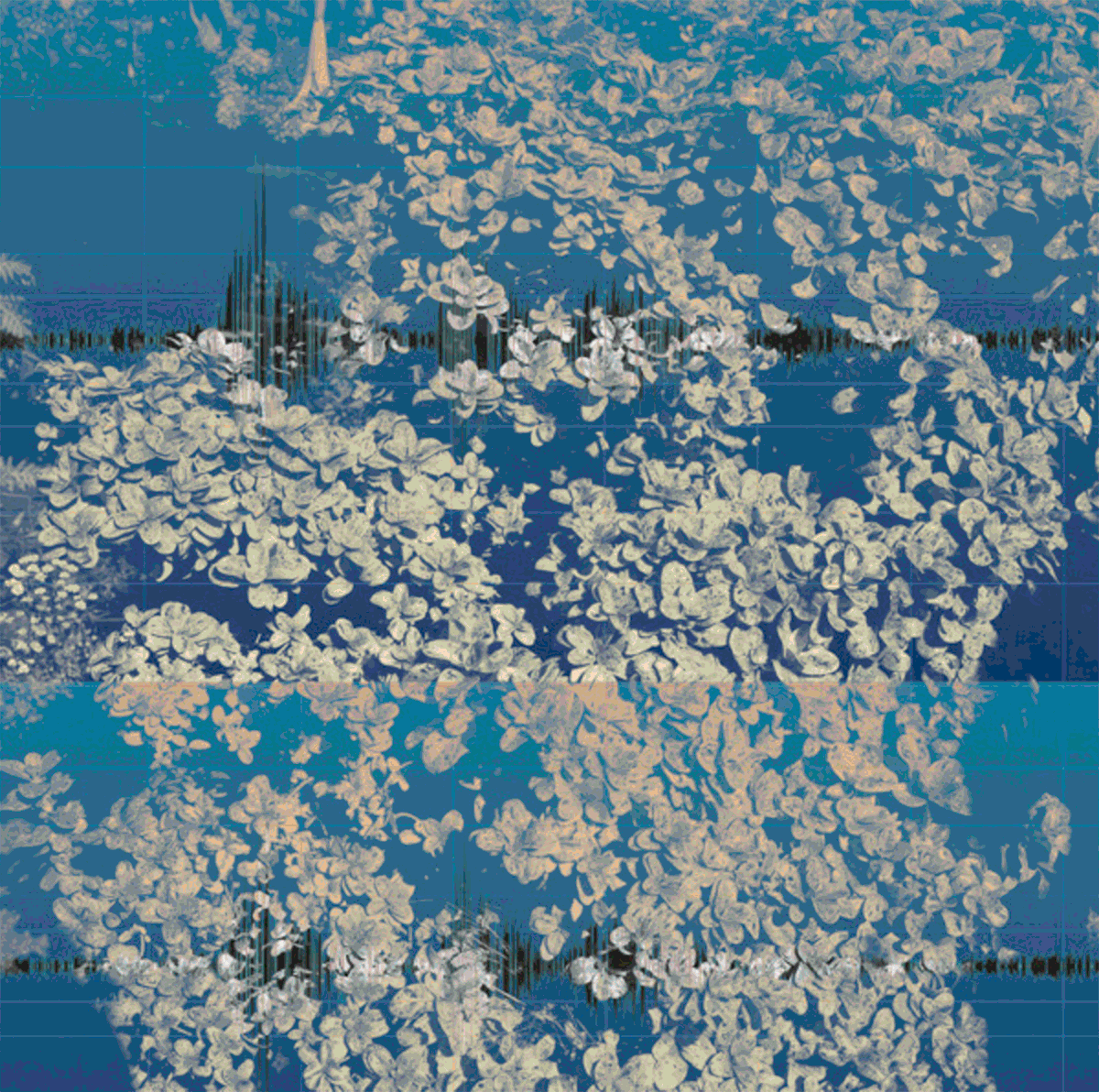Mindfulness as a practice has grown into a bit of an objective. In mindfulnesses’ thingliness, the trend has over time revealed virtues at some particular costs. To be mindful feels comforting and acceptable, assuring the practicant they are doing ok in life. As a sort of self-soothing for people with a conscience. People with a conscience are routinely regarded as neurotic by those who seem to truly not care at all about anyone else. And such in these simultaneous orientations, neither one of them is true or false but are. So this cookie presents a recipe of the continual discomfort in paradox and welcoming of complexity, without the gross reduction of human activity to motorised parts. Perhaps the differences end up being more tasty than singular ingredients or maybe the singular ingredient has more complexity- these kinds of evaluations often come down to taste; and while we have recently had our senses tested, the ability to deeply sensitise maybe our distinguishing characteristic in our ages’ romanticism: the race towards roboticised life of transhumanism.
To want to know whether or not we are doing a good job at being human has significance. For one the crushing weight of being a failure seems better than revealing the truth of our vulnerabilities, and for another alleviates us from the mental traffic jam of accepting life as is it fully is. The reach to peace, even that of my own, can be a form of personal tyranny. As yoga teachers once said; it is easy to be peaceful in contexts of peace, it is more practice to be peaceful in contexts of unrest. And on the converse, there are contexts of peace which enable some of the most violence among complicit bodies encouraged not to think. Prone to snapping when hungry, angry, lonely, or tired, the human animality was made as a counter point in sophistication which seemed to imagine a fully self-restrained body at its own free will.
Within a particular view, mindlessness must to be the reason for all the problems in the world; yet I often witness people tossing rubbish who know full well they are placing garbage outside of its socially acceptable place for being dealt with. If everyone was more mindful things would be different. Right? And if that notion were correct, then what are the mindfully rebellious up to? I personally find it is not mindfulness alone but the ability to communicate and sustain conflict without spiritual (psychological) annihilation that builds healthier scenarios and relationships.
Mindfulness in this way can be used as a tool to subdue, and does not always account for key areas of relational importance: nuance and difference. Cultural differences, personal values, social policies are not neatly dealt with in a single world order-though there are staggering number of beliefs floating around about this. A kind of unitarianism, in its utility creates a kind of homogenisation. It’s not much of a stretch to see how the realm of mind reflects losses in biodiversity. And that realm of mind could be feared because on some level, a human being knows, they are not a 2dimensional being, not a singularity in an unchanging essence but a being full of biological processes that change and evolve through several stages of life. And in each stage of life are cultural and real phenomena forming fundamental boundaries of acceptable and punishable behavior. In this and several other pursuits, questions unlock the dogmatic and get the ball rolling.
What associations do you have with the term: mindfulness? Where did those associations come from? Did you come up with them up yourself? Entirely? If you follow the ways the thoughts were put there, will your brain be stretched apart like putty? Will you feel like the world is unraveling, will you feel stressed and uneasy? Saddled with doubt? What’s wrong with those kind of feelings? And why is it psychotherapy is the first place you might start to think about where this kind of thinking “belongs.” Calling something crazy or a conspiracy theory is often a fast way to write-off, wrong ways of being mindful to accept the so called right ways of being mindful. But if your mind is your freedom to choices, your pathway to creating the life you want, with the responsibility of the creating of life with you at the driver seat, would it really be so dangerous to consider the associations to mindfulness were not put there by some kind of accident, but rather through a history of considered actions.
The basis of thinking itself can be considered formed out of social policy, or the invisible but real social boundaries of acceptable and unacceptable thinking. In this day, we can look towards the boundary as a line, acceptable or unacceptable, and mindfulness as associated with positive or negative thinking. These kinds of constructed ways of thinking create an axis of acceptable or unacceptable mindfulness, or in practice, acceptable or unacceptable thoughts, otherwise known as thought policing.
This makes mindfulness practices ripe training grounds for rhetoric and social policy training if one has not be forewarned. I found cautionary words often absent as what could be so harmful when people appear so peaceful? This effectively subverts well intentions of mindfulness as a means to control thought and subdue libidnal urges.
Controlling thoughts, based on the premises established in social psychology, or the tendency the human will have towards conformity as a basis for survival. Survival within the social group, and survival as a living entity. The two are deeply intertwined in Psyche so that it feels like the soul, or who and what we are.
In this way, invite yourself to not be mindful, but instead to think for yourself and in whatever proper proportion means for you. Meditation can be used as a tool without a goal, to openly be critical and considerate, to be and exist with yourself, and wonder about thoughts themselves as much as you’re aware or unaware who or where those thoughts came from.
You are whether or not you think. As far as any one can know, you exist.
The experience of life comes not alone from being but forms and reforms based on relationships with concepts otherwise known as choices. And choices constitute the realm of divinity. Therefore making the right choices are often not discernible by appearance, as appearances do not tell the whole story. A path of inquiry into thoughts begins to unravel for the sake of observation and study. And in this study we find there is no self in the ways often assumed, but rather aspects of physiology and psychology performing themselves through behaviours, both conscious and unconscious. A life of choosing, is not free from thinking. Non-thinking shifts energy from forms of words to dreamforms, embracing presence which remain elements of consciousness. It requires a diligent practice. A mindful life then offers itself as a life full of thoughts, full of consideration, of giving attention and mind toward toward yourself and others. Neither of these cancel each other out but exist in their entirety on spectrums of life whether or not they are related to thoughts at all. If I have not lost you on this culinary endeavor of philosophical chemistry, let’s consider:
Does a plant or color think itself that shape or color? Or is the plant or color the way that it is? And does your positive or negative view of the plant or color change how the color is, or does it rather change how you would regard having the plant or color in your proximity. And if you tried to banish the negative category of form or color from your mind, would it obliderate its existence? or would you be lying to yourself about its existence? And instead of forcing yourself to like a colour or not, you accept the simultaneity of the isness and your preferences. Both exist without the need to annihilate the other. The resilience to exposures directly impacts both the quality and longevity of your experience here in a realm that indeed contains every multitude from all times past or present. Mindfulness now suddenly feels like a feat of gastronomical enormity now doesn’t it? There is a fullness in the quality of using energy instead of having energy use you, isn’t there?
The way thinking tends to be thought of is that thinking just happens when the happenings are formed by trillions of events occurring in symphony. And there are generative ways of thinking and deconstructive ways of thinking; both can occur at the same time, much as I experienced while studying Frankfort School ideologies. At a certain point established systems of thought revealed patterns which had ties to histories of people who formed and reformed the ideas. And I wanted to learn how to create space around choices to try to know a priori what kind of creating I was doing in my studio. Not as a means to control the digestion in the viewer, but as a means of exercising responsibility for the actions of creating. Humans can create, but I often notice the well meanings do not always go well at all, and I wondered why that was and why some people were permitted question asking and others weren’t, and why more people did not seemed aligned to sort out what is really taking place despite all kinds of signs being waved saying this way or that. I wanted a means to turn down the noise and find a different kind of guidance system. That’s where I found a particularly bizarre set of ideas in play around reproducing (life itself), value and labor and a sort of trance-like dedication to the notion of sustainability. In the notion of sustain, is a sort of annhilation of diversity, a system gets refined so that it operates in a certain way. In my experience with mechanical perfection is that the operation also involves a great deal of maintenance, and that I’ll get to soon regarding social media.
So while the quality of thought can be a generative way of thinking, that builds bridges to ways of thinking where instead of slotting a thought into the positive or negative boxes pre-built by the social policies of mindfulness, a new expanse of freedom can be experienced-if not in your daily life choices, but in the way you think.
Free thinking costs energy. You may find new choices appear as the quality of thought evolves, develops, changes forms. You may find conclusions previously acceptable are no longer the same. At a certain point, you may wonder, when enough is enough. When is the thinking sufficient for the quality of life you wish to create?
And that is where I would like to propose the idea, a thought is sufficient in as much as the reality of your life matches as much of the ideal of it. Cookie cutters can give a recipe a predicable form, but if it is really being the lead creative director the quality of your life: your health, you relationships, your work, your home and so on-then it is really you who decides what is satisfactory or not.
Consider the etymology.com entry on Sufficent: early 14c., from Old French soficient “satisfactory,” or directly from Latin sufficientem (nominative sufficiens) “adequate,” present participle of sufficere “to supply as a substitute,” from sub “up to” (see sub-) + combining form of facere “to make, to do” (from PIE root *dhe- “to set, put”).
Sufficient thinking can then be considered a personal choice. Without a ruler or guide outside of yourself telling you what is right or wrong way of being mindful, you are right in the main seat of creating your own thoughts, making your own mind, and breaking out of the often cyclic tension derived from social policy and individual freedom to make up your own mind.
One last area I have to bring up about data because of its weaponisation. Facts are a good starting place but are not sufficient enough for quality thinking. For example, the divorce rate has declined in Norway. That is not because more people are figuring out the value of creating a family structure together, but rather because people are further embracing individualism and a collectivist structure, which forms as long as you are willing or able to live with the tacit rules. People find the institution of marriage obsolete, but do not yet see how generational wealths were formed through families and how vulnerable people are when they are separate and distanced from each other. The individualistic approach works in times of excessive abundance; and in excess (which the west is known for), there are great wastes.
The culture wars today keep people's bodied minds occupied with endless argumentation amongst themselves, while the people elected go and do what they were going to do anyway. I thought everyone could see how this works, but I was wrong. Way wrong. But I still think humans can figure this out and that dystopia isn't the only vision of the future.
In plain sight. Sometimes the most difficult things to see are right in front of our nose. Old thoughts, colloquialisms in particular, had me wonder if the ways of looking (vision) and words used to describe what is seen (story) offered insight or clarity. My noticing machine, similarly as others', picks-up on patterns and symbols and seeks cohesion. The cohesion seeking part of the noticing mechanism tends to be locked into high gear in philosophers, artists, and those working in the creative sectors.
SM, the abbreviation for Social Media looks oddly familiar to S&M: Sadomasochism. A bit of a reach? Too fantastic or bizarre? If Twin Peaks was a real television program, then everything can realised. To claim Social Media is built on the dynamics of a sadomasochistic dynamic doesn't require too much deep thinking. As aforementioned, the evidence is right in front of our eyes. People willingly create images of themselves to be paid for later, or sometimes in advance. That's the thing; no one really knows for sure who or how people are being paid except the agents and influencers themselves.
In Norway, the SM folk have an organizing body called United Influencers. This is an organization dedicated to leaders in social media. The popular vote made evident by the heart emoji, like buttons, lift up those in view to the contemporaneous version of celebrity, exposing a function of fame long in play: famous people push back, or influence, the very audience that fans them on. The dynamic is permitted, and therefore arguably considered normal, and more-so come into light and scrutiny in the mobile phone society.
Another noticing machine red-flag: Influence. A word association I noticed associated with influence: influenza. To be under the influence of a viral material. These are not far reaches through language alone, though they strike the cognitive dissonance funny bone straight on when wellness is the message coming through social media.
Then there is the traveling. Though words tend to change meaning throughout time, it doesn't take more than an international flight to remember the root of the world travel, is travail. To beautifully depicts the trailing, beautifully, shows the influencer as a triumph of human strength and dignity.
These words referred to in this short essay, and their meanings are derived from the Oxford dictionary definition of the words. In other words, I am not making this stuff up. The word signs are symbols creating the fluidity of experienced reality. This SM temporal reality involves an imagined reality- full with cognitive dissonance- to be measured, hovering and within the psyche. Bodies become the exorciser of the psyche- a motive of ideals built on vision. Guy Debord informed us this dynamic was coming decades ago. He could see it on the street. We are photographed much too much now. Visions are flooding our bodies.
There is very little in my body that can make sense of the compliance to the SM program. Every moment I participate these curiosities run in the background, flowing within, in a place Jung might have called the subconscious. Except it is not below consciousness, it's right in front of my face, in my palm. The dependence on the internet and Social Media has created a world of possibilities within the world that already contained so many possibilities.
My questions are related to value, to which value are those virtual possibilities to our actual, material lives - and, at what cost? So I want to ask you, what is your vision of the future?












